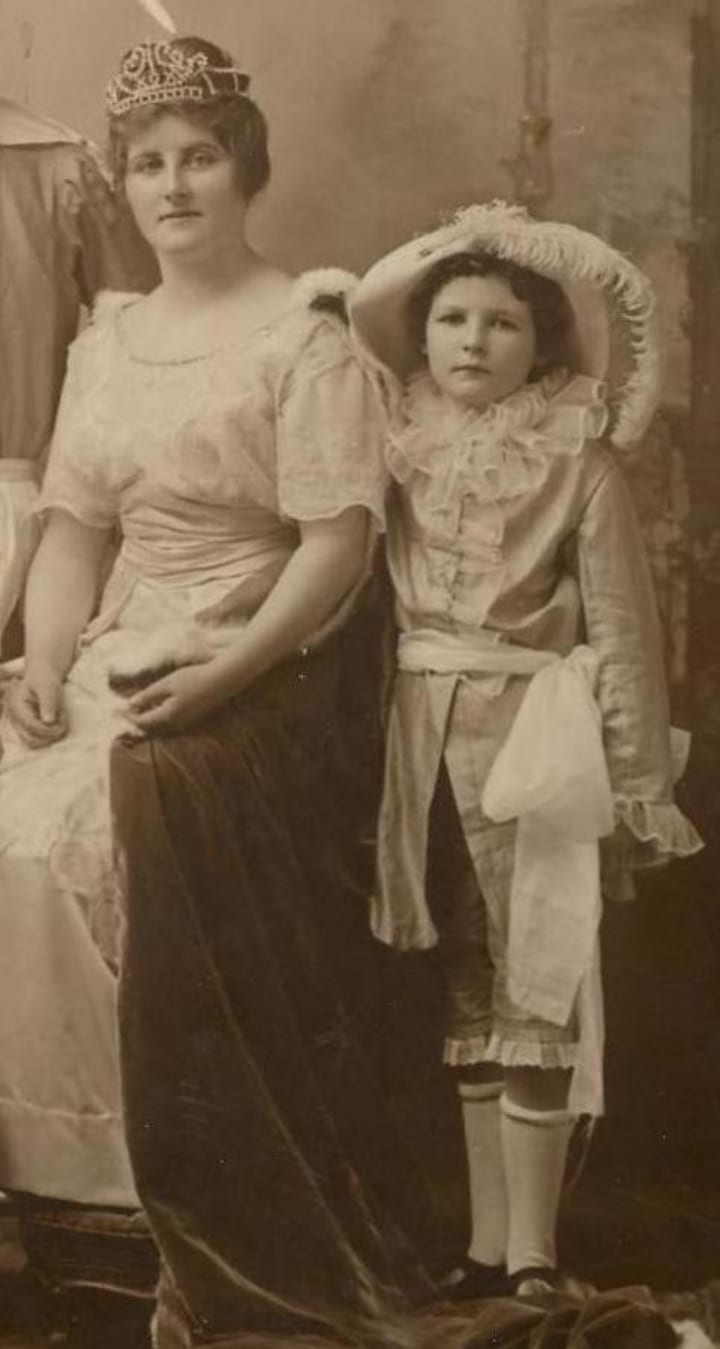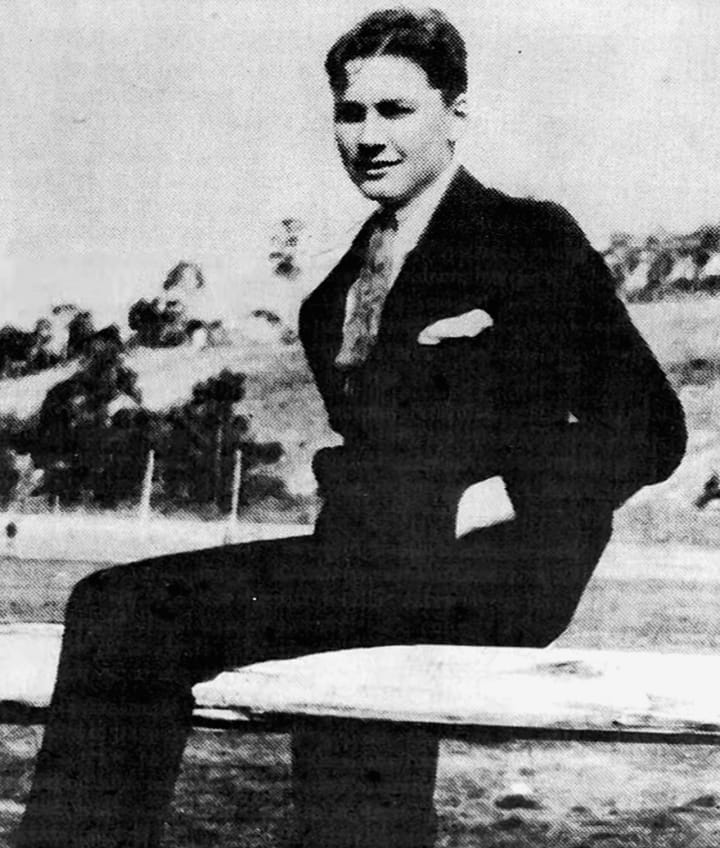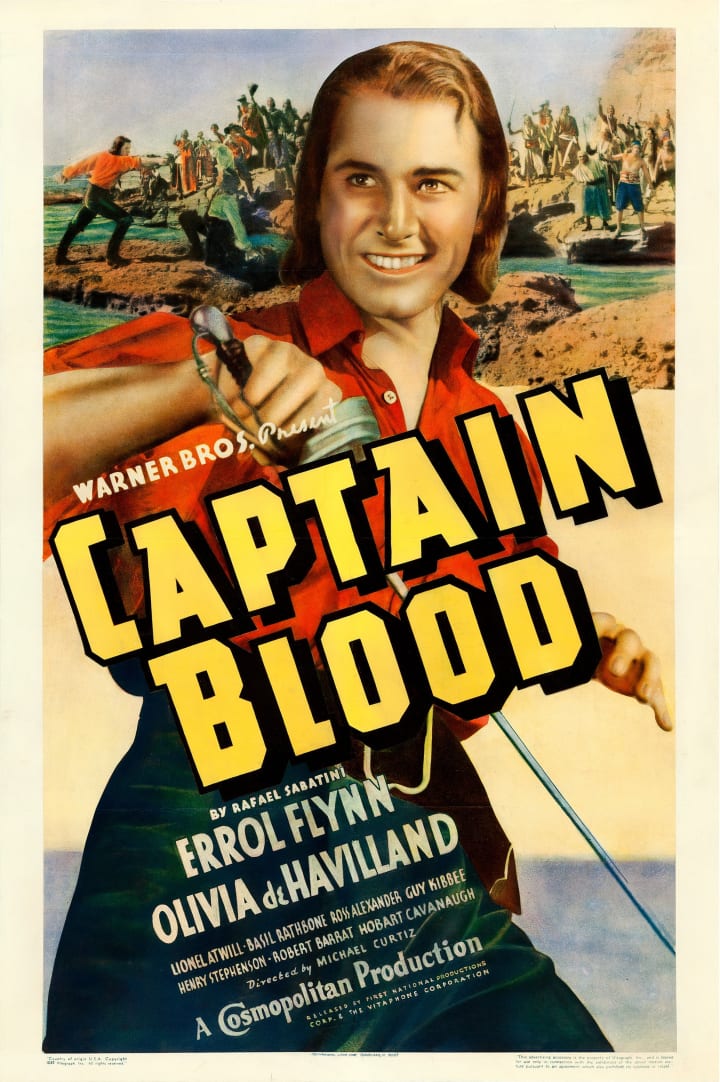Live Fast & Die Old
An Analysis of Errol Flynn

He emerged out of nowhere and became the face of Hollywood’s golden age. On camera, he was the ultimate swashbuckler and rogue lover; yet beyond the silver screen, Errol Flynn couldn't be any different from what audiences thought he was. For he had an extreme lust for life, was married three times, had numerous love affairs, spent money like it grew on trees, sailed entire oceans, wrote about his involvement in international wars and revolutions, and died penniless. Even today, he is still debated, whether or not he was a human embodiment of alpha male masculinity or a drunken womanizer who used the American studio system as a tool to get what he desired. A saint or a sinner. Yet all can agree that he was fact, not fiction.

Born in Australia, on June 20, 1909, Errol Flynn was the son of Theodore Flynn and Lily Young. Going up as a young child, Errol bonded with his father by recovering animal bones and creating skeletons for the Tasmania University. Yet it seems from a very early age, his life took dark turns. The relationship between his parents was not a happy one, and Theodore was often involved in many scandalous affairs outside of the marriage. Which resulted in them being separated. Errol would go with his mother to live in Sydney, while his father remained on the island of Tasmania. Under her wing, Errol had developed a hypocritical view of his mother, after being raised by what appeared to be a strict disciplinarian, only then to find her having affairs of her own; acting no different than his father. This would affect him for the rest of his life; making him believe that in order to survive in the world he had to be stronger than the women around him, so that they couldn't inflict the same amount of psychological damage like that of his mother.

By the time Errol was in his late teens, Errol was subsequently expelled from every school he attended, from Australia to England. With no academic prospects, he used a small loan to purchase a schooner, took to the sea with an assortment of friends, and sailed off to reinvent themselves in New Guinea. He would then spend four years there, making money in ways which modern society would deem illegal and immoral; hunting endangered animal, helping to run a plantation with indentured labor, and sailing off to the countries of Southeast Asia, frequenting the brothels and opium dens with an Austrian doctor (and future Nazi spy) named Hermann Erban. However, Errol’s life would the forever change once again, when in 1933 he voluntarily undertook a screen test for a movie entitled In the Wake of The Bounty. Considered to be Australia’s first talking motion picture, Errol starred as the mutinous sailor Fletcher Christian, who convinced the abused crew of the HMS Bounty to overthrow their tyrannical captain.
Though the film never became a critical or box office success, the acting bug permanently bit Flynn and saw a new purpose. In 1935, he risked everything by immigrating to Hollywood, California. There, he fell in love and married the French actress Lilli Damita. It would be from her, that Errol was able to befriend the same European immigrants who wielded enormous power within the studio system (most importantly, Jack Warner). Such a friendship between Flynn and Warner would then open the door to Flynn’s acting career in America, with the 1935 pirate epic Captain Blood. Taking the ultimate financial gamble, Flynn was casted as the lead role of an Irish doctor who becomes wrongfully persecuted and enslaved. Together with a group of prisoners, they escape bondage, seize a warship, and become the most infamous band of pirates in the Caribbean.

The film became one of the most popular and financially successful films of the 1930’s. It instantaneously catapulted Errol into the limelight, as Hollywood’s ultimate adventurer, sword fighter, gunslinger, war hero, and smooth lover. With this new found fame, Errol would spend the next 23 years acting in lead roles in over 40 major studio films (such as Charge of the Light Brigade, The Adventures of Robin Hood, Dodge City, The Sea Hawk, Santa Fe Trail, They Died with Their Boots On, The Adventures of Don Juan, and The Sun Also Rises), and collaborate on screen with fellow actors Olivia d’Havilland, Ronald Reagan, Raymond Massey, Ann Sheridan, Judith Anderson, Vincent Price, Tyrone Power, Ava Gardner, Paul Lukas, Orson Welles, & Trevor Howard.
Yet behind the glitz and glamor of the golden age, Errol Flynn began to embody the characters for which he played on screen, similar to the upcoming style of realistic “method acting”. But unlike method acting, where the actor delves into the personality of the character to achieve a genuine performance, Flynn lived the parts he played because he yearned for a life outside of the ordinary. Even by the those of his circle of celebrity friends in Sunset Boulevard. Whenever he wasn’t working on a movie, he was in Barcelona; neutrally corresponding the Spanish Civil War, sailing the waters of the California coast and the Gulf of Mexico, writing three successful autobiographical books (Beam Ends, Showdown, and My Wicked Wicked Ways) and fucking his brains out with almost every woman he became acquainted with.

As time went on, the consequences of such a unstable lifestyle took it’s toll, after his wife Lilly gave birth to their son, Sean, and filed for divorce in 1942 after learning of her husband’s lack of faithfulness to the marriage. Also in 1942, a Life Magazine photographer and journalist published an article about Flynn’s scandalous (and rumored to be sexual) relationship with two teenage girls (Betty Hansen & Peggy Satterlee) on board his yacht, The Sirocco. Such rumors were then made to be fact, when both girls accused him of rape. The case would publicly make it’s way to the criminal court, and if convicted, Errol would spend the rest of his life behind bars. Yet surprisingly, thanks to a good defense attorney and a series of testimonies which proved not only that Betty Hansen consented to the sexual actions which transpired on board the yacht, but also condemned both girls for other crimes. By the end of the trial, Errol Flynn was found not guilty, and both Peggy Satterlee and Betty Hansen would be charged with illegal abortion and crimes against nature.
Following the statutory rape allegations, Errol Flynn continued to act in Hollywood films, thought the 1940’s and early to mid 50’s, however the roles were getting smaller due to his destroyed image as a gentleman and upright citizen, his connections that he once had with the immigrant CEOs were dwindling as they aged and retired, and Errol himself had become heavily addicted to alcohol and narcotics to overcome another two hostile marriages. Plus, he had become tired of what he referred to as “play acting” in studio war films, while all of his friends were serving in the United States military for real, during the Second World War. Along with his failed marriages and constant pressure to make his spousal and child support payments on time, Flynn remained in a state of finanacial limbo; resulting in him making cameo appearances on television (sketch comedies & game shows) to make ends meet.
By the end of the 1950's, Flynn wasn’t even a shadow of the man who the world once knew and loved. In order for him to be who he was, he had to do what he did prior to his acting career; go to where the action and adventure was and savor it for all that it was worth. With his own private film crew and his 17 year old girlfriend, Beverly Aadland, he traveled to the jungles and war-torn cities & jungles of Cuba; befriending the likes of Fidel Castro, Ernesto “Che” Guevara, and their army of revolutionary guerrillas (The July 26th Movement). With their approval, Errol Flynn acted and produced two low-budget films during the years of 1958 and 1959. The first being a sexual fantasy B-movie, entitled Cuban Rebel Girls. The second, being a documentary called Cuban Story: The Truth about Fidel Castro Revolution.

Despite all the personal money that Flynn dedicated to the films, neither of them made any money; leaving him flat broke. He had no choice but to sell his yacht to a Canadian socialite in Vancouver. On October 14, 1959, Errol was suffering from severe pain in his legs and back after arriving in Vancouver. Even though he was brought to the immediate attention of a doctor, he was soon found dead. The autopsy report from the Vancouver General Hospital labeled his causes of death from a heart attack, numerous unattended blood clots, and the degeneration of his liver. At the request of his estranged third wife, Errol’s body was shipped back to the United States and was laid to rest in Glendale, California.

Today his legacy is found in four children (Sean, Deidre, Rory, and Arnella) two grandchildren (Sean & Luke), thousands of fans who preserve both his Hollywood image and his human image, as well as in the cinematic adaptations of him; from Peter O'Toole in My Favorite Year, to Timothy Dalton in The Rocketeer, to Jude Law in The Aviator, to Kevin Kline in The Last of Robin Hood, to Thomas Cocquerel in In Like Flynn. Despite those who argue of his moral standing in society, then and now, he will forever be known as a man who lived life to the fullest, and died with little to no regrets.
Works Cited
- Flynn, Errol. My Wicked Wicked Ways. First Cooper Square Press, 2003. Print. Accessed March 25, 2020.
- McNulty, Thomas. Errol Flynn: The Life and Career. McFarland & Company Inc., 2004. Print. Accessed March 25, 2020.
- Moore, Hammond, John. The Young Errol: Flynn Before Hollywood. Trafford Publishing Inc., 2011. Print. Accessed March 25, 2020.
- “Tasmanian Devil: The Fast and Furious Life of Errol Flynn.” YouTube, uploaded by Jack Marino, 16 February 2014, https://www.youtube.com/watch?v=dzFcq61GGw8&t=1714s.
About the Creator
Jacob Herr
Born & raised in the American heartland, Jacob Herr graduated from Butler University with a dual degree in theatre & history. He is a rough, tumble, and humble artist, known to write about a little bit of everything.






Comments
There are no comments for this story
Be the first to respond and start the conversation.